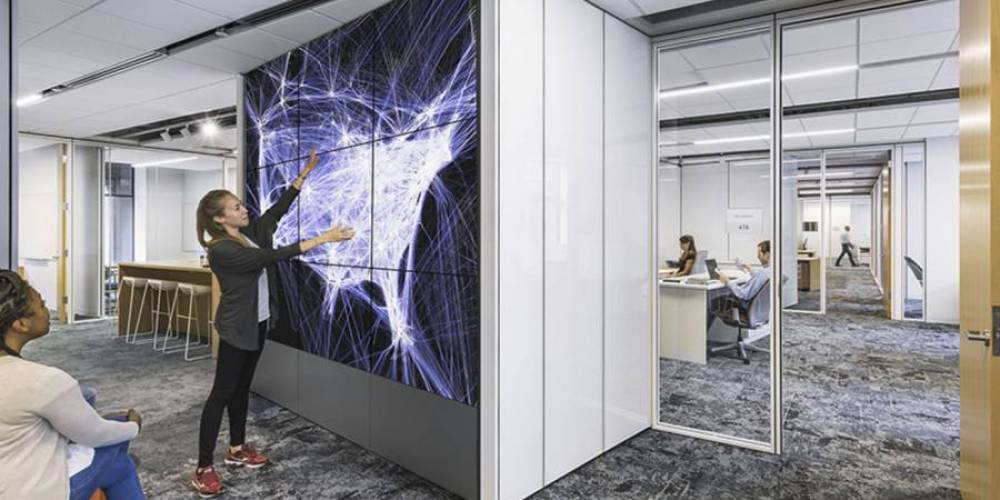
School and Institutional buildings are typically “owner-occupied” and have long-term usage horizons. Therefore, the potential benefits/penalties of technology systems selection have greater ramification than in a developer built or short-term lease situation. Additionally, the potential benefits of certain design considerations/decisions can be realized over the useful occupancy of the building, as opposed to attempting to justify costs over the period of a lease.
This article discusses select technology decisions that our current school and institutional clients are considering during the design of their projects.
AV and security systems continue to become more network and/or cloud based. This means that it is possible, and perhaps reasonable, to move toward one comprehensive network for a project, with configurations to support different types of traffic, systems, and security requirements. In the case of cloud-based applications/solutions, the network provides the access to the cloud applications. The technical, financial, and operational benefits of one integrated institution-wide network are often overshadowed by IT departmental or inter-departmental history and tradition, separate departments, networks, and perceived job security. Given the trend toward single networks and cloud-based solutions, it is shortsighted to continue in a direction that does not reflect this trend. The social and financial costs of maintaining separate departments/groups for data, telecom, WiFi, etc. will look wasteful when the necessary alignment occurs.
Wireless connectivity and mobility are fundamental expectations of faculty, patients, and students, essentially everyone who will work or be present in the schools and institutional buildings that are being designed. [Note: we agree that there are situations where job functions do not require, or support mobility and hardwired positions are good and appropriate, however, this is not the general case. One recent institutional project added four cables per location, incurring over $2.8M of cabling and equipment cost that will not provide any value to the users.] In so many projects, the clients and/or IT department insists on installing multiple hardwired cables to work positions, and other locations throughout the building. Typical reasons include, “you don’t know what will come in the future”, “wireless bandwidth isn’t there”, or “we always do this (this is our standard).”
What will come in the future is faster and more secure wireless networking and 5G cellular communications. Each technology will provide enhanced connectivity and speeds, solidifying the commitment to wireless connections and mobility. The problems with the “traditional” approach include the additional cost of the unnecessary cabling, associated networking hardware, and licensing/support costs, adding to both the project construction cost and to the ongoing operating costs, without providing end-user value.
The current “hot topic” of lighting control, occupancy sensing, space utilization, and network-based power, (“PoE”) is distracting many clients from practical solutions. There are numerous LED light fixtures and systems that provide the ability to dim individual and grouped fixtures, integrate daylight harvesting, automate lighting controls, and provide occupancy data. The disruptive message in this market discussion is coming from the data network manufacturers and integrators, who present the above ideas as new capabilities, available only through data network integrators via Power over Ethernet from network switches. The biggest issues with this proposed solution are that it introduces much higher first cost, multiple new vendors with ongoing operating costs, and isolates data in the IT systems.
Every school and institutional project has lighting control and building automation systems present or included in the project design. Current design codes and practices require occupancy/vacancy sensing and daylight harvesting. Projects should leverage the capabilities of their simplest and most broadly applicable systems as opposed to introducing new vendors, systems, and costs. The highly touted data collection and integration are simpler and more effectively accomplished through the traditional systems, BMS, lighting control, etc. The best result will come from projects that better integrate and leverage the data from the traditional systems and are not caught up in the hype of “newer is better.”
Published in High Profile's March 2019 issue.
